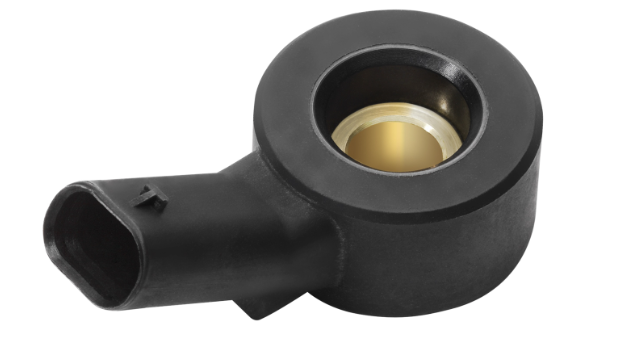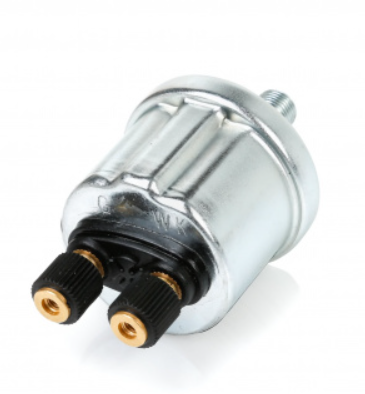Modern cars are equipped with numerous sensors that play crucial roles in monitoring and controlling various systems for optimal performance, efficiency, and safety. The number of sensors in a car can vary depending on the make and model, as well as the vehicle's sophistication and features. Here are some common types of sensors found in modern cars:

-
Engine Sensors:
- Mass Airflow Sensor (MAF)
- Manifold Absolute Pressure Sensor (MAP)
- Oxygen Sensor (O2 Sensor)
- Throttle Position Sensor (TPS)
- Coolant Temperature Sensor
- Crankshaft Position Sensor
- Camshaft Position Sensor
- Knock Sensor
- Engine Speed Sensor
-
Transmission Sensors:
- Transmission Speed Sensor
- Transmission Fluid Temperature Sensor
-
Braking System Sensors:
- Anti-lock Braking System (ABS) Sensors
- Wheel Speed Sensors
-
Safety Sensors:
- Airbag Crash Sensors
- Occupant Detection Sensors
- Parking Assist Sensors
- Blind Spot Detection Sensors
-
Emissions Control Sensors:
- Catalytic Converter Temperature Sensors
- Exhaust Gas Recirculation (EGR) Valve Position Sensor
-
Comfort and Convenience Sensors:
- Ambient Temperature Sensor
- Rain Sensors for Automatic Wipers
- Light Sensors for Automatic Lights
- Parking Distance Control Sensors
- Tire Pressure Monitoring System (TPMS) Sensors
-
Chassis and Suspension Sensors:
- Steering Position Sensor
- Wheel Alignment Sensors
-
Climate Control System Sensors:
- HVAC Temperature Sensors
- Sun Load Sensors
-
Entertainment and Navigation System Sensors:
- GPS Sensors
- Microphones
- Camera Sensors for Parking Assist and Surround View Systems
-
Battery and Charging System Sensors:
- Battery Temperature Sensor
- Alternator Voltage Regulator Sensor
These are just a few examples of the many sensors found in modern vehicles. The actual number and types of sensors in a car can vary significantly based on the vehicle's make, model, year, and the specific features and systems installed. Sensors play a fundamental role in monitoring vehicle performance, improving safety, enhancing driver comfort, and ensuring environmental compliance. Each sensor contributes to the overall functionality and efficiency of the vehicle's systems and subsystems.

7 Most Common Types of Car Sensors
n modern vehicles, various sensors are crucial for monitoring and controlling different systems to ensure optimal performance, safety, and efficiency. Here are seven of the most common types of sensors found in cars:
-
Mass Airflow Sensor (MAF):
- The MAF sensor measures the amount of air entering the engine to determine the appropriate fuel delivery for optimal combustion. This information helps achieve better fuel efficiency and engine performance.
-
Oxygen Sensor (O2 Sensor):
- O2 sensors monitor the level of oxygen in the exhaust gases, providing feedback to the engine control unit (ECU) to adjust the air-fuel mixture. These sensors play a vital role in optimizing fuel efficiency and reducing harmful emissions.
-
Throttle Position Sensor (TPS):
- The TPS monitors the position of the throttle plate to relay information to the ECU about the driver's throttle input. This data is used to adjust fuel injection and ignition timing, ensuring smooth engine operation and responsiveness.
-
Crankshaft Position Sensor:
- The crankshaft position sensor detects the position and rotational speed of the crankshaft. This information is essential for timing fuel injection, ignition timing, and other engine-related functions.
-
Camshaft Position Sensor:
- Camshaft position sensors monitor the position and speed of the camshaft to help synchronize fuel injection and ignition timing. They are critical for the engine's operation and performance.
-
Wheel Speed Sensors:
- Wheel speed sensors are part of the anti-lock braking system (ABS) and traction control system. They monitor the rotational speed of each wheel to detect wheel slippage and enable the ABS to modulate braking pressure for improved stability and control.
-
Coolant Temperature Sensor:
- The coolant temperature sensor measures the temperature of the engine coolant. This information is used by the ECU to adjust fuel delivery, ignition timing, and cooling fan operation to maintain the engine’s optimal operating temperature.
These seven sensors are among the most common and essential components in modern vehicles. They play key roles in monitoring various parameters, providing critical data to the vehicle's control systems for efficient operation, improved performance, and enhanced safety. Other sensors, such as the MAP sensor, knock sensor, ABS sensors, and more, are also vital for monitoring and controlling different aspects of the vehicle's operation.

How Many Sensors Are in a Car Engine? 5 Main Sensors
A car engine typically contains several sensors that monitor various parameters to ensure optimal performance, efficiency, and emissions control. The number of sensors in a car engine can vary depending on the engine type, make, and model of the vehicle. Here are five main sensors commonly found in a car engine:
-
Mass Airflow Sensor (MAF):
- The Mass Airflow Sensor measures the amount of air entering the engine to determine the correct air-fuel mixture for combustion. This information is crucial for adjusting fuel delivery and maintaining engine performance and efficiency.
-
Oxygen Sensor (O2 Sensor):
- The Oxygen Sensor monitors the level of oxygen in the exhaust gases to provide feedback for adjusting the air-fuel ratio. This helps optimize fuel efficiency and reduce harmful emissions from the engine.
-
Crankshaft Position Sensor:
- The Crankshaft Position Sensor detects the position and rotational speed of the crankshaft. This information is essential for timing fuel injection, ignition timing, and other critical engine functions.
-
Camshaft Position Sensor:
- The Camshaft Position Sensor monitors the position and speed of the camshaft, allowing the engine control unit to synchronize fuel injection and ignition timing accurately. This sensor plays a key role in the engine's performance and efficiency.
-
Coolant Temperature Sensor:
- The Coolant Temperature Sensor measures the temperature of the engine coolant. This data is used by the engine control unit to adjust fuel delivery, ignition timing, and cooling system operation to ensure the engine operates within the optimal temperature range.
These five sensors are among the main sensors found in a car engine. They monitor critical parameters such as air intake, fuel mixture, engine speed, timing, and temperature, providing essential data for the engine control unit to adjust various engine functions for optimal performance, efficiency, and emissions control. Additionally, car engines may contain other sensors like the Throttle Position Sensor (TPS), Knock Sensor, Oil Pressure Sensor, and more, depending on the specific engine and vehicle system requirements.



